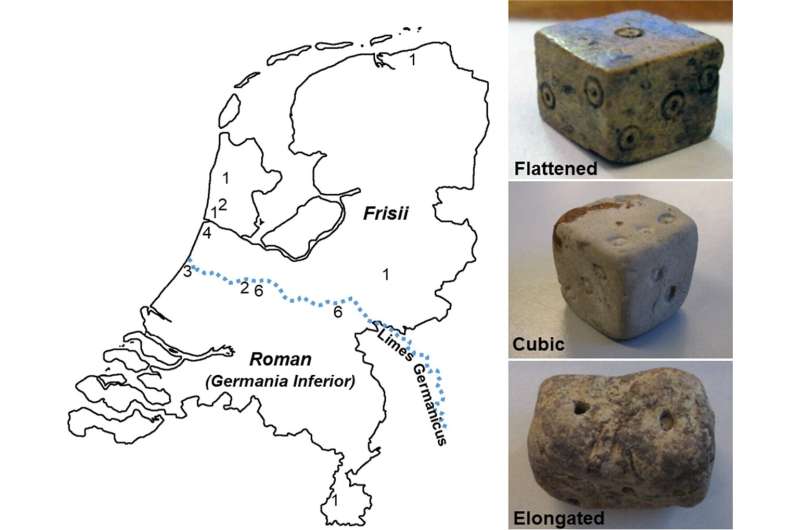August 5, 2022 report
Why early Romans used lopsided dice

A pair of researchers, one with the University of California, Davis, the other Drew University, believe they may have solved the mystery of why people living during the time of the Roman Empire used lopsided dice in their games. In their paper published in the journal Archaeological and Anthropological Sciences, Jelmer Eerkens and Alex de Voogt, describe their study of dice used during the days of the Roman Empire.
During the time of the Roman Empire, people played a game called taberna (similar to backgammon) which involved throwing dice. The dice were made out of bone, metal or clay and had symbols shown on the faces to represent numbers, as with modern dice. But they differed markedly in shape. The Roman dice were usually elongated or made into other odd shapes that made them asymmetrical.
In this new effort, the researchers studied 28 die from the period and found that 24 of them were asymmetrical. They found a pattern in the irregularity—icons representing one and six were often present on larger opposing surfaces. Prior research has shown that asymmetry in a die can impact the probability of a given side landing face up. Based on their measurements, the researchers calculated that the difference in size would change the odds of rolling a given a number, on average, from one in six to one in 2.4.
To find out if the Romans made their dice asymmetrical as a means of cheating, the researchers conducted an experiment—they asked 23 students to place marks on reproductions of the asymmetrical Roman dice. The researchers reasoned that because the students would not know the purpose of the experiment and had no incentive to cheat, they would mostly place the marks randomly. But that was not the case, the students still placed the one and six on the larger sides. When asked why, many suggested it was easier because starting on a large side meant ending on a large side where they would need to place the most pips—a finding that suggests the Romans were not trying to cheat, they were just trying to make life easier for themselves. It also suggests that they were not too concerned about which face was assigned which number because they believed that many random events, such as dice throwing were governed by the fates. But the researchers also note, that more clever people likely figured out over time that certain die throws were more likely to wind up a one or a six, and thus would choose one or the other.
More information: Jelmer W. Eerkens et al, Why are Roman-period dice asymmetrical? An experimental and quantitative approach, Archaeological and Anthropological Sciences (2022). DOI: 10.1007/s12520-022-01599-y
© 2022 Science X Network


















